Posts Tagged ‘Boston’
Healthy Lifestyle Wristbands Causing Skin Rash
 As it turns out, a popular wristband for tracking sleep and exercise was actually contributing to poor health.
As it turns out, a popular wristband for tracking sleep and exercise was actually contributing to poor health.
The Fitbit Force wristband has been recalled and pulled off the market after 9,900 reports it caused skin irritation. Another 250 consumers reported blistering. The product had only been on the market since October. The company has recalled about one million wristbands in the U.S. and 28,000 in Canada. The reactions can be caused by the stainless steel casing, materials used in the strap and adhesives used to assemble the product, the Consumer Product Safety Commission (CPSC) announced in its recall notice last week.
This recall involves Fitbit ForceTM wireless activity-tracking wristbands with model numbers FB402BK, FB402BKS, FB402SL and FB402SLS. Consumers should contact San Francisco-based Fitbit for a full refund. They can call (888) 656-6381 or visit www.fitbit.com and click on Recall/Safety info on the bottom right side of the home page.
The wristband serves as a pedometer, sleep monitor and watch. It is about ¾ inch wide and is made of plastic with a stainless steel casing and clasp and a small LED display screen.
The recalled wristbands had a wide distribution. They were sold at several major retailers, including AT&T, Apple Stores, Best Buy, Brookstone, Dick’s Sporting Goods, Radio Shack, REI, Sports Authority, Target and other stores. It was sold online at Amazon.com and Fitbit.com. Each was sold for about $130.
In a statement to the media, Fitbit said that “a thorough analysis by independent labs and medical experts revealed that the reactions reported by a small percentage of Force users were likely the result of allergic contact dermatitis.” The exact number appears to be in dispute as consumer watchdogs questioned the figures following the CPSC recall announcement. The company had previously issued a voluntary recall on its own on Feb. 21, offering a refund to consumers who wanted one.
Related:
Fitbit Recalls Force Activity-Tracking Wristband Due to Risk of Skin Irritation, Consumer Product Safety Commission
Reports of Rashes Spur Fitbit Recall, ABC News.
About Breakstone, White & Gluck
The Massachusetts product liability lawyers at Breakstone, White & Gluck have over 100 years combined experience handling injury cases involving defective products. If you have been injured, it is important to learn your rights. For a free legal consultation, contact us at 800-379-11379 or 617-723-7676 or use our contact form.
How Dangerous Is That Boston Intersection?
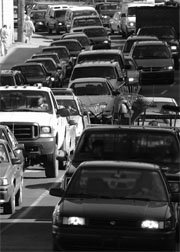 Boston drivers may have a reputation for being the worst around, but the city has managed to stay off a list of most dangerous intersections in New England. On the list, compiled by GoLocal Worcester, the closest Boston came to mentions were intersections in Somerville, Chelsea and Cambridge.
Boston drivers may have a reputation for being the worst around, but the city has managed to stay off a list of most dangerous intersections in New England. On the list, compiled by GoLocal Worcester, the closest Boston came to mentions were intersections in Somerville, Chelsea and Cambridge.
This Somerville intersection of Mystic Avenue and Fellsway was third on GoLocal Worcester’s, “60 Most Dangerous Intersections in New England” and first on its, “10 Most Dangerous Intersections in Massachusetts.”
60 Most Dangerous Intersections in New England
New Haven, Connecticut is home to the worst intersection in New England, with 561 car crashes reported over three years. A stretch of Interstate 95 in Pawtucket, Rhode Island came in second, while Somerville’s Mystic Avenue and Fellsway intersection ranked third.
10 Most Dangerous Intersections in Massachusetts
GoLocal Worcester ranked dangerous intersections based on total number of crashes over three years, deaths, injuries and property damage. It collected data from each state’s Department of Transportation. It considered traditional intersections as well as on- and off-ramps on highways.
1. Somerville: Mystic Avenue and Fellsway. This intersection saw 91 total crashes over three years, including three fatal crashes, 24 crashes resulting in injuries, and 64 car accidents which resulted in property damage only.
2. Chelsea: Revere Beach Parkway and Washington Avenue. This roadway saw 39 total crashes in three years, including two fatal car accidents, 11 with injuries, and 26 crashes which resulted in property damage only.
3. Stoughton: Canton and School streets. The numbers were very similar to Chelsea: 39 car accidents in three years, including two fatal auto accidents, 10 with injuries and 27 with property damage only.
4. Waltham: Main and Lyman streets. Some 73 crashes in three years, including one which resulted in a death, 18 resulting in injuries and 54 crashes with property damage only.
5. Holyoke: Main and Cabot streets. This spot saw 57 car accidents over three years, including one fatal car crash, 18 with injuries and 38 which resulted in property damage only.
6. Worcester: Main and Mill streets. This area saw 53 total motor vehicle accidents, including 1 traffic death, 18 crashes resulting in injuries and 34 resulting in property damage only.
7. Cambridge: Massachusetts Avenue and Vassar Street. This area saw 41 car crashes, including one fatal accident, 19 with injuries and 21 with property damage only.
8. Lowell: Veterans of Foreign Wars Highway and Varnum Avenue. This area saw the second highest number of traffic accidents, with 165 over three years. There were no fatal car crashes, 37 with injuries and 128 which resulted in property damage only.
9. Holyoke: Holyoke Street and Holyoke Mall at Ingleside. This intersection saw 198 crashes over three years, more than any other spot on GoLocal Worcester’s list. There were no fatal car accidents, but there were 29 accidents resulting in injuries and 169 crashes resulting in property damage only.
10. Lowell: Bridge Street and Veterans of Foreign Wars Highway. There were 112 car accidents here over three years, including no fatal crashes and 34 which resulted in injuries. Some 78 other motor vehicle accidents resulted in property damage only.
Related:
10 Most Dangerous Intersections in Massachusetts.
60 Most Dangerous Intersections in New England 2014.
Read More
February Product Recalls: CPSC Urges Consumers to Look for Cedar Chests after Children’s Deaths
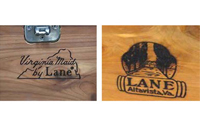 We share some of the February product recalls and notices issued by the Consumer Product Safety Commission (CPSC). Each year, thousands of unsafe products are recalled by the CPSC and other government agencies. The CPSC is now focused on the dangers of wooden chests, issuing a renewed call for the cedar chests which recently trapped two young children in Franklin and warning about other chests which have unsafe latches. Since 1996, the agency is aware of 34 reports of deaths involving wooden storage and toy chests.
We share some of the February product recalls and notices issued by the Consumer Product Safety Commission (CPSC). Each year, thousands of unsafe products are recalled by the CPSC and other government agencies. The CPSC is now focused on the dangers of wooden chests, issuing a renewed call for the cedar chests which recently trapped two young children in Franklin and warning about other chests which have unsafe latches. Since 1996, the agency is aware of 34 reports of deaths involving wooden storage and toy chests.
Protect your family and home by taking a quick glimpse at this month’s list:
Renewed Search for Cedar Chests. On Feb. 27, the CPSC and Lane Home Furniture issued a call for the public to make a renewed search for the company’s cedar chests. On Jan. 12, a young brother and sister from Franklin suffocated to death in one of the chests while playing hide-and-seek. The CPSC investigation determined that the 75-year-old Lane cedar chest closed and automatically latched shut, locking the children inside.
The chest should not have been in use with the defective locks. In 1996, the Lane Company recalled 12 million similar chests which were made between 1912 and 1987. By 1996, six children had suffocated inside the cedar chests. By 2000, a seventh child had suffocated and two others had nearly died. The company has offered new hardware so the chests will no longer automatically latch shut, but reports estimate there are still 6 million chests which need the repair.
Consumers may have one of these chests in their homes even if they do not realize it. Some may have been purchased at second-hand stores or passed down through families. In the Franklin case, the CPSC said the chest was purchased at a local resale store about 13 years ago. Consumers can look for these names inside the cedar chests: “Lane” and “Virginia Maid.”
If you have a chest, you should immediately remove the latch and contact Lane for the replacement hardware. Read the recall notice.
Infantino Recalls Teething Toys Due to Choking Hazard; Sold Exclusively at Target
Infantino has recalled about 191,000 teething toys sold at Target. The toy was the “Go Gaga Squeeze & Teethe Coco the Monkey.” The company received seven reports of infants choking or gagging on the monkey’s tail. No injuries have been reported. The toys were sold at Target stores nationwide and online from December 2012 through January 2014 for $13. Consumers should take these toys away from young children and contact Infantino for a free replacement.
BebeLove Recalls Baby Walkers Due to Fall and Entrapment Hazards
BebeLove Baby Walkers were recalled for not meeting federal safety standards. BebeLove USA recalled about 3,600 models sold on Amazon.com, Overstock.com and small retailers in California, Arizona and Utah from November 2011 through July 2013.
Consumers can are advised to stop using the product and contact BebeLove for a free repair kit.
No injuries have been reported, but the CPSC reports that style number 358 can fit through a standard doorway and is not designed to stop at the edge of a step as required by the federal safety standards. In addition, style number 368 has leg openings which allow a child to slip down to the point their head can become entrapped at the neck. The CPSC said children using these walkers can be seriously injured or killed.
Rowe Fine Furniture
Rowe Fine Furniture recalled about 220 Ottomans due to a risk of suffocation. No injuries were reported, but the company learned a child became trapped in an Ottoman after a sibling closed the lid on the storage compartment. Consumers can contact Rowe for a free replacement lid and a warning label.
Study: 40 Percent of Americans Would Encourage Children Not to Play Football
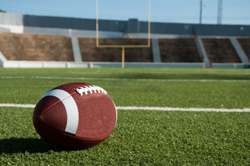 Last summer, the National Football League (NFL) announced it had reached a $765 million settlement with retired players who suffered from concussions and head injuries. But a federal judge has rejected the settlement and the debate about how to address the risk continues.
Last summer, the National Football League (NFL) announced it had reached a $765 million settlement with retired players who suffered from concussions and head injuries. But a federal judge has rejected the settlement and the debate about how to address the risk continues.
Even President Barack Obama has spoken: “I would not let my son play pro football,” he told The New Yorker magazine. But like many of us, he is a fan; he made the statement while watching the Miami Dolphins play the Carolina Panthers.
Recent surveys show many agree with the president, but many do not. In January, a NBC News/Wall Street Journal poll reported 40 percent of Americans would encourage their children to play another sport. Nearly 60 percent answered they would not discourage their children from playing organized football. Other findings include:
- Some 41 percent thought the NFL has taken meaningful action to reduce and prevent concussions; 20 percent disagreed.
- Roughly half of those surveyed with an annual salary of $75,000 or more said they would encourage their child to play another sport. On the other hand, only about 25 percent of those who earned $30,000 or less per would try to steer their child to another sport.
- One third of those who did not attend college said they would encourage their children not to play football, compared to 42 percent of college graduates and 57 percent of people with post-graduate degrees.
The NBC News/Wall Street Journal poll included 800 adults and had a margin of error plus or minus 3.46 percentage points.
Another Poll
In October, a HBO Real Sports/Marist poll reported a deeper divide. Out of more than 1,200 adults, one third said they would be less likely to allow their own son to play football if given the choice. But in the end, 85 percent said they would let their son play. Another 13 percent said they would not and two percent were unsure. (The study did not report on how respondents would feel about letting their daughters play.)
NFL Concussion Lawsuit
The NFL released figures in January showing the number of player concussions dropped 13 percent from 2012 to 2013. It has taken several steps to prevent concussions, including adding neurological consultants to the sidelines and replacing equipment.
But another notable part of the debate came from a recent NFL Nation survey of 320 players, just prior to the Super Bowl. The survey reported 85 percent would play in a Super Bowl with a concussion.
More than 4,500 retired players have filed concussion-related lawsuits against the NFL. The settlement must cover over 20,000 retired players for 65 years. The players accuse the league of long concealing the long-term risk of concussions from players, coaches and trainers. If an athlete suffers multiple concussions, it can lead to chronic traumatic encephalopathy (CTE), a progressive degenerate disease of the brain which is associated with memory loss, depression, paranoia, confusion and dementia.
Related:
Going the Distance, The New Yorker.
Poll Finds 40 Percent Would Sway Children Away from Football, Wall Street Journal.
Read More
Heaving Snow Posing Risk for Homeowners and Roofs
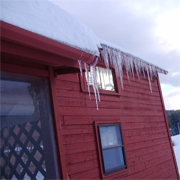 A young woman’s death after heavy snow caused a roof collapse in Weymouth has officials warning the public to watch out for their homes.
A young woman’s death after heavy snow caused a roof collapse in Weymouth has officials warning the public to watch out for their homes.
On Thursday, a 29-year-old woman was killed when a carport collapsed on her. The woman was talking on the phone while sitting on the porch steps of a Harlem Road home. The Massachusetts Emergency Management Agency (MEMA) has issued a warning for the public to clear off their home roofs and storm drains in their neighborhoods to minimize flooding problems.
While we expect snow in Massachusetts, it has challenged drivers and caused numerous school day cancellations this season. Piles of snow have hampered visibility. Drivers are navigating a maze of snow-packed and slushy roads along with dangerous potholes and, which are starting to appear in the melting.
In addition to the Weymouth woman’s death, a barn collapse in Framingham killed three cows and injured four others this week. At the Burlington Mall, a water main break trapped a vehicle in a large sinkhole. The mall was closed but expected to re-open today.
It may seem like a record-setting season, but not this year. Yes, we are already 25 inches above the average season’s snowfall. But earlier this week (before the snowfall) the Boston Herald reported that while Boston had seen 53.5 inches, 1995-1996 was the record snow year, with 107.6 inches. The National Weather Service has predicted this season will not even make the top 10 list for heaviest snowfalls.
When snow piles up, some roofs are vulnerable to collapse, especially when there are numerous snow storms combined with rain and overnight melting. Flat commercial roofs are at the greatest risk. This year, while the snow may not appear that deep, some of the storms have dumped heavy wet snow, and that has been followed by soaking rains. The loads are immense.
How to remove snow from a roof is a challenge. Homeowners can attempt to clear it themselves with a snow rake, which can be purchased at most hardware stores. But you should never use a snow rake from a roof. You should clear the snow from the ground to avoid the risk of slipping and falling and head injuries.
Unless you are experienced, avoid ladders, which can be extremely slippery. The other thing to know is that metal snow rakes can conduct electricity if they come into contact with a power line.
Often by this time of year, a roof may require a professional treatment because of repeated snow storms and winter freezing. If that is the case, call someone who is experienced and insured for this type of work. They should be insured in case they damage your home, and they should also carry worker’s compensation insurance for their employees. You have the right to ask for proof of insurance, and you should.
Finally, do take some time to shovel your walks and your stairs. It the safe and the neighborly thing to do.
Read More
What to Know About the the Graco Child Safety Seat Recall
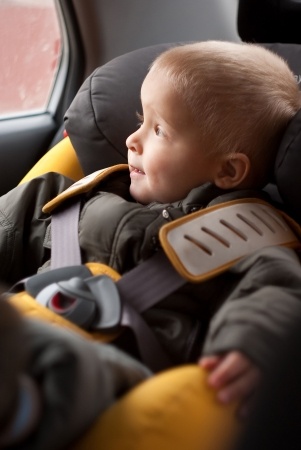 Parents across the country are checking their backseats after Graco issued one of the largest child safety seat recalls in history this week. It may not be the last recall either; the Georgia-based company is facing pressure from the National Highway Traffic Safety Administration (NHTSA) to recall 1.8 million additional seats.
Parents across the country are checking their backseats after Graco issued one of the largest child safety seat recalls in history this week. It may not be the last recall either; the Georgia-based company is facing pressure from the National Highway Traffic Safety Administration (NHTSA) to recall 1.8 million additional seats.
Graco recalled 3.7 million car seats manufactured between 2009 and 2013, the fourth largest recall ever for safety seats and the largest in five years, according to media reports. The NHTSA announced Tuesday that Graco was voluntarily recalling 11 models, though the agency had sought recalls of 18 models. The agency has stated it could take legal action to force the recall of the other models, which are rear-facing models for infants.
The car seats have defective buckles, which can be difficult to unlatch or become stuck. Graco said it was not aware of any injuries resulting from the car seat, but the New York Times reports the NHTSA began investigating Graco in 2012, after parents complained to regulators about having to cut children out of the seats from straps. One parent said it took her 45 minutes to loosen the straps enough to pull her daughter out.
But there is at least one case of serious injury. In a Jan. 14 letter to Graco, the NHTSA noted the company was a defendant in a wrongful death lawsuit in Los Angeles Superior Court in which a two-year-old child was killed in a fire following a car crash. The child was traveling in a Graco Nautilus car seat. The company has said the wrongful death case was resolved by a confidential settlement agreement.
Read the full list of recalled car seats. Parents who have defective car seats can contact Graco for a free replacement buckle. Graco says the seats are safe to use until parents obtain a replacement, but the NHTSA is urging parents to find other seats until they receive the new buckles.
Parents want to be able to trust the car seats, strollers and cribs they use to care for their children. Because these are important purchases, many parents and family members spend time researching and reading consumer reviews on Internet shopping sites such as Amazon.com before purchasing.
These reviews are helpful, as is feedback from other parents. But there are a few other steps parents can take:
Mail in the product registration. You want to make sure the company knows you have its product and need to be notified of any defect or recall and be included in the remedy process.
Do your research. Search the NHTSA database for car seat recalls.
Car seat inspection. Visit this NHTSA website page to search for sites where you can get your car seat inspected. Watch as the certified professional fits your child’s car seat and what to watch as you go about your daily driving routine.
Check your product. Remember a few basics about all children products, from toys to car seats. First, make sure they do not have small parts which can easily break and become a choking hazard. Make sure your child can move freely in seats with straps. Make sure the product can fully support your child by reading the age and weight requirements.
Read More
Buckle Up Massachusetts: State Fails to Win Top Safety Score from Watchdog Organization
 When it comes to seat belts, Massachusetts may need to buckle up and strengthen its laws if it wants a higher rating from one safety organization.
When it comes to seat belts, Massachusetts may need to buckle up and strengthen its laws if it wants a higher rating from one safety organization.
Massachusetts was among 29 states which received a secondary rating from the Advocates for Highway & Auto Safety in its annual report released in January. In the 2014 “Roadmap of State Highway Safety Laws” report, the group gave 10 states – including Rhode Island – its highest rating. Poor ratings were given to New Hampshire and 10 other states.
Massachusetts received strong marks for teen driving laws, but fell short in other areas, including its lack of a primary seat belt law.
In Massachusetts, the law governing seat belt use is M.G.L. c. 90 § 13A. Drivers and passengers are required to wear seat belts, but police can only issue citations for violations if they pull over a vehicle for another offense. Each driver and occupant over age 16 shall be fined $25 for failing to wear a seat belt. Drivers can be fined for occupants 12 to 16 years old. Children 12 and younger must follow the Massachusetts Child Passenger Safety Law, M.G.L. c. 90, §7AA.
Across the country, 33 states and the District of Columbia have primary enforcement laws for front seat passengers and 17 have these laws for back seat passengers.
The National Highway Traffic Safety Administration (NHTSA) has long cited seat belts as the most effective way to reduce the risk of death in a car crash. In 2012, the agency credits seat belts with saving 12,174 lives in auto accidents.
In Massachusetts, we have fiercely debated our seat belt laws. Gov. Michael Dukakis signed a mandatory seat belt law in 1985. But a year later, opponents organized a citizen campaign and repealed the measure at the ballot box.
While today’s law requires drivers and passengers to wear seat belts, in 2009 the NHTSA surveyed seat belt use across the country and ranked Massachusetts last for compliance.
At that time, 67 percent of occupants of vehicles in Massachusetts were wearing seat belts compared to the national average of 83 percent among other states.
Recent state figures report a greater compliance rate. The 2012 Massachusetts Safety Belt Usage Observation Study, prepared for Massachusetts Highway Safety Division reported a 73 percent compliance rate in 2011, an increase from 50 percent in 2000.
Attorney Ronald Gluck of Breakstone, White and Gluck stated that “fortunately, over the years, our firm has seen a significant reduction in cases where the injuries are directly tied to the failure of occupants to wear seat belts. ”
Related:
2014 Roadmap of Highway Safety Laws, Advocates for Highway & Auto Safety.
2012 Massachusetts Safety Belt Observation Study, Massachusetts Highway Safety Division.
Read More
Pedestrians Being Fined in Some U.S. Cities
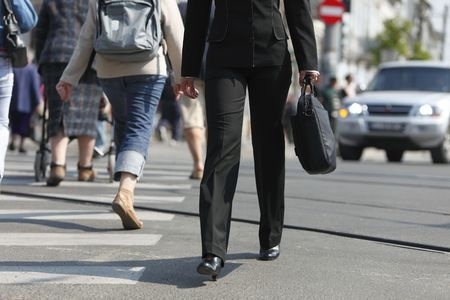 Pedestrians now have to watch out for more than just traffic in two major cities.
Pedestrians now have to watch out for more than just traffic in two major cities.
Jaywalking laws have traditionally gone unenforced in many cities, but New York City and Los Angeles are now telling pedestrians to follow the letter of the law or face citation. Pedestrians are surprised, and in some cases, are facing hefty fines for crossing the street before the traffic signal changes. One man in Los Angeles was ticketed $197 as he walked to work.
“I didn’t even know that was against the law,” he told the New York Times. “I was like, “You are the L.A.P.D., and this is what you are doing right now?”
New York City Police are taking the same steps. The city saw 12 pedestrian fatalities in January, prompting new Mayor Bill de Blasio to announce Vision Zero, a plan to eliminate traffic deaths within 10 years. Vision Zero focuses largely on drivers, but at the same time, New York City Police have started enforcing jaywalking laws.
Pedestrians have responded strongly against enforcement, both in Los Angeles and New York City. In Los Angeles, a lawyer who was ticketed as he walked to a local courthouse told the New York Times:
“Honestly, I cussed them out for about five minutes. I told them what a stupid waste of time this was, and wasn’t it great that they had two police officers standing there when there are obviously more important issues out there.”
In New York City, an 84-year-old man, Kang Wong, has filed notice he plans to sue the city and police department for $5 million. He alleges he was pushed against a wall and beaten as he was cited, sustaining head injuries and other trauma.
In New York City, three of the pedestrians were killed in the Upper West Side, near Broadway and 96th Street. They were a 9-year-old boy who was hit by a taxi as he crossed the street with his father, a young doctor struck by an ambulance outside her apartment building and a 73-year-old man hit by a tour bus.
After these deaths, the city installed electronic signs warning pedestrians to use the crosswalks. Police stood by with a bullhorn, citing pedestrians who violated jaywalking laws $40-$100.
Every city has an interest in this conversation, including here in Boston and Massachusetts. Our state sees an average of 86 pedestrian deaths each year, nearly one fifth of all traffic fatalities, according to WalkBoston, a non-profit advocacy organization which represents pedestrians and 75 cities and towns across the state.
But rather than ticket pedestrians, WalkBoston advocates for improving infrastructure and education. For instance, it notes that 90 percent of pedestrians killed are struck by cars traveling 40 mph compared to 5 percent who die by cars traveling at 20 mph. One way to encourage drivers to slow down is to reduce travel lane widths, the organization says.
Perhaps you are wondering what the fine for jaywalking is in Massachusetts. We hope you are sitting down: It is $1.00! But after three offenses, the fine doubles M.G.L. c. 90, § 18A. Municipalities won’t balance their budgets on jaywalking tickets, that’s for certain.
Related:
New York City takes aim at jaywalking, The Boston Globe.
Read More
Product Recalls in January: Baby Strollers, Walmart Table Sets
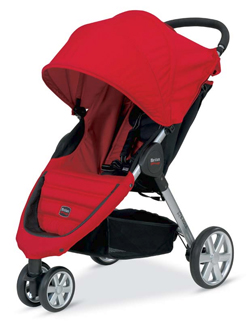 A few weeks ago, two young children in Franklin tragically died after becoming trapped in a defective wooden hope chest during a game of hide and seek. We follow reports of defective products carefully, and we now share some of the January product recalls issued by the Consumer Product Safety Commission (CPSC). That agency is charged with protecting the public from unreasonable risks of injury or death associated with consumer products.
A few weeks ago, two young children in Franklin tragically died after becoming trapped in a defective wooden hope chest during a game of hide and seek. We follow reports of defective products carefully, and we now share some of the January product recalls issued by the Consumer Product Safety Commission (CPSC). That agency is charged with protecting the public from unreasonable risks of injury or death associated with consumer products.
Britax Stroller Recall
Britax recalled 225,000 strollers last week due to the stroller’s folding mechanism, which poses a risk for partial fingertip amputation. The company had received eight incident reports, including one partial fingertip amputation, one broken finger and severe finger lacerations.
Consumers are advised to stop using the recalled strollers immediately and contact Britax for a free repair kit.
The recall involves these models: Britax B-Agile, B-Agile Double and BOB Motion Strollers. They were sold at major retailers and juvenile product stores nationwide from May 2011 through June 2013. They were also sold through Amazon.com, ToysRUs.com and other online retailers. They sold for between $250 and $450.
In recent years, Maclaren USA has also recalled strollers with hinges which posed an amputation risk. In 2009, Maclaren USA recalled one million strollers after 12 reports of fingertip amputations and three other incidents. The company re-issued the recall in 2011. By that time, it had received a total of 149 reports, including 17 reports of fingertip amputations and other injuries, including lacerations and fingertip entrapments/bruising.
Pacifier Recalls
There were two recalls related to pacifiers this month. On Jan. 22, Playtex recalled 1.25 million pacifier holder clips in the U.S. and 150,000 in Canada. These clips attach the pacifier to clothing, diaper bags and strollers.
Playtex received 99 reports of the holder cracking or breaking. No injuries have been reported. Consumers are advised to stop using the product and contact Playtex for a full refund.
Last week, Fred & Friends recalled three models of its “Chill Baby” pacifier line, including 183,000 in the United States and 17,000 in Canada. The pacifiers have novelty features which can detach and do not meet federal safety standards. No injuries have been reported but consumers are advised to stop using the pacifiers and return them to Fred & Friends for a $12 refund.
Gree Dehumidifier Recall Expanded
In September, Gree recalled 2.2 million dehumidifiers under 12 brand names because they posed a risk for fire and burns. It expanded this recall last week, adding another 350,000 dehumidifiers under the GE brand name in the U.S. and 2,700 in Canada. The company had received 16 reports of incidents, including 11 reports of overheating with no property damage and 5 reports of fires associated with $430,000 in property damage.
The previous recall was associated with more than 71 fires and $2,725,000 in property damage. No injuries have been reported.
These dehumidifiers were manufactured by Gree Electric Appliances of China and imported by GE Appliances of Louisville, Kentucky. They were sold from April 2008 through December 2011 at Sam’s Club, Walmart and other stores in the U.S. and Canada. They were also sold on Amazon.com and Ebay.com. They sold for between $180 and $270. Consumers are advised to stop using the dehumidifiers and contact Gree for a refund.
Walmart Card Table and Chair Sets Recalled
Walmart recalled its Mainstays five-piece card table and chair set earlier this month because the chairs can collapse and may pose a risk of finger injury, including amputation. The retailer received 10 reports of injuries, including one finger amputation, three fingertip amputations, sprained or fractured fingers and one report of a sore back.
These table sets were sold in Walmart stores and online from May 2013 through November 2013 for about $50. On the bottom of the chairs, they have a label which reads: “Made by: Dongguan Shin Din Metal & Plastic Products Co,” or “Made by: Taiwan Shin Yeh Enterprises”, is printed on a white label on the bottom of the chairs.
Consumers are advised to stop using this product and return to Walmart for a full refund.
Related:
Consumer Product Safety Commission website.
Strollers Recalled by Britax Due to Partial Fingertip Amputation Hazard, CPSC.
Gree Expands Dehumidifier Recall to Include GE Brand Dehumidifiers Due to Serious Fire and Burn Hazards, CPSC.
Read More
Unsecured Load Causes Deadly Crash
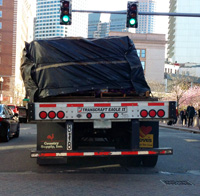 A Framingham motorist tragically lost her life yesterday when she slowed to avoid an unsecured mattress which flew off a truck on Rte. 128 in Burlington, Mass. Authorities believe the mattress broke free from a dump truck with a white cab occupied by two men. As the car slowed to avoid the mattress on the highway, a second car hit it causing fatal injuries.
A Framingham motorist tragically lost her life yesterday when she slowed to avoid an unsecured mattress which flew off a truck on Rte. 128 in Burlington, Mass. Authorities believe the mattress broke free from a dump truck with a white cab occupied by two men. As the car slowed to avoid the mattress on the highway, a second car hit it causing fatal injuries.
The truck operator did not stop at the scene or identify himself afterward. The victim had slowed her car, a Toyota Corolla sedan, and tried to avoid hitting the mattress. She was struck from behind by a Toyota Tundra pick-up truck. The Toyota Tundra pick-up truck driver suffered minor injuries. Police are looking for the driver of the dump truck, which left the scene.
Unfortunately, this was not an isolated case.
According to the AAA Foundation for Traffic Safety, there are approximately 25,000 crashes a year in North America related to unsecured loads, resulting in approximately 80-90 deaths. Here in Massachusetts, a 27-year-old Lynn man was killed in a similar accident in September 2011, when a 400-pound tire being hauled by a truck broke loose on Interstate 93 in Somerville.
Drivers have a responsibility to secure loads and operate safely, whether they are commercial or non-commercial drivers. All 50 states and the District of Columbia have statutes pertaining to unsecured loads and fines, which range from $10 to $5,000, according to the Government Accountability Office (GAO). In 15 states, violations carry the possibility of imprisonment. Drivers may also face civil lawsuits to compensate the injured and their family.
This may be the third serious truck-related accident in Massachusetts this week. On Sunday, a pedestrian in Uxbridge was struck and killed by an unknown driver. The driver of a tractor-trailer truck, who is employed by Gorham Transport, later contacted police and said he was in the area. Police are investigating.
On Monday morning, a tractor-trailer carrying 11,000 gallons of gasoline overturned in Fall River, engulfing in fire and requiring some to be evacuated. The driver was treated for non-life threatening injuries and the crash is still being investigated.
About Breakstone, White & Gluck
Our Boston truck accident lawyers have over 100 years combined experience representing individuals injured in tractor-trailer and commercial truck accidents. If you have been injured, learn your rights for seeking compensation. For a free legal consultation, contact us toll-free at 800-379-1244 or 617-723-7676 or use our contact form.

